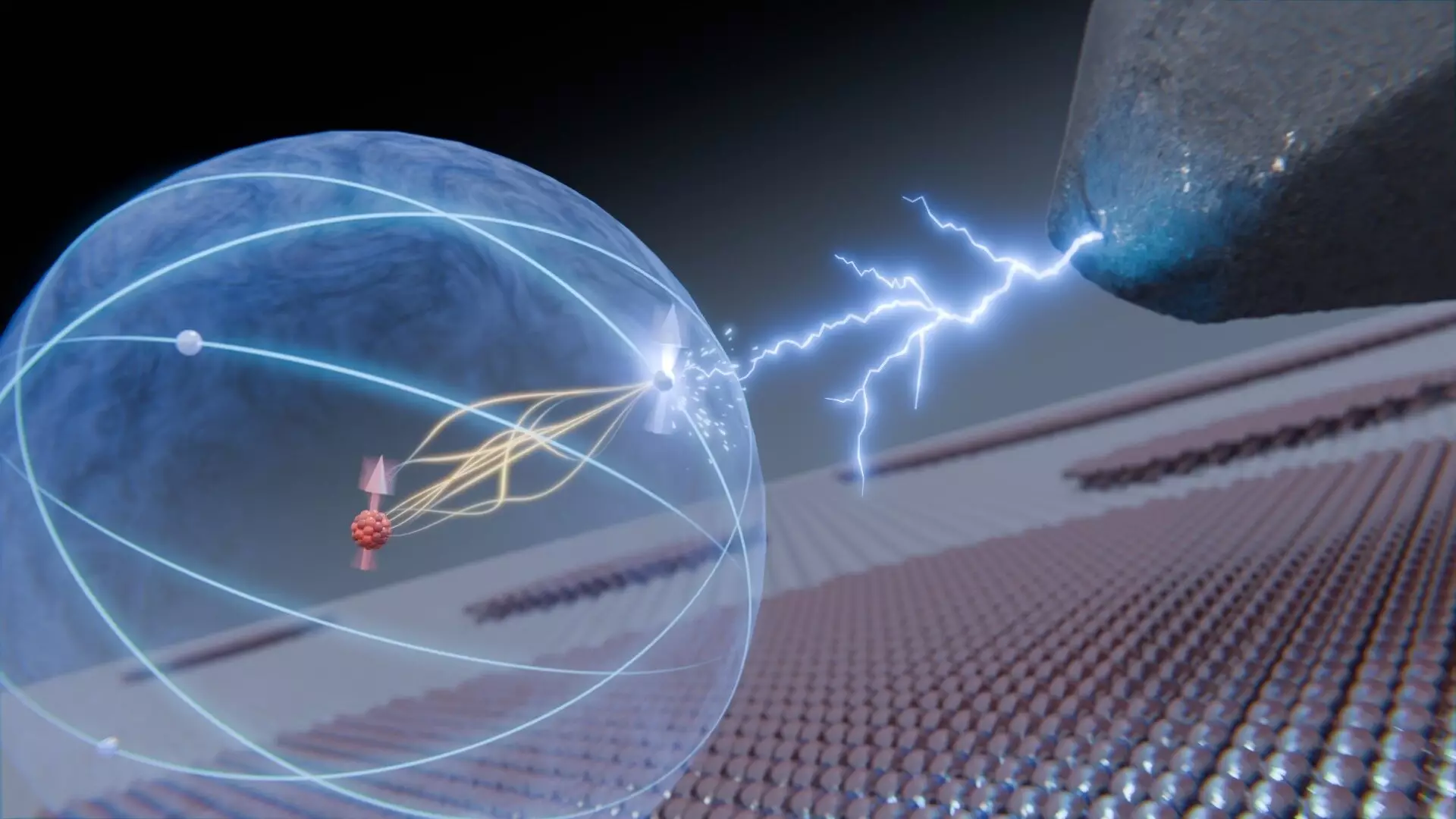Recent advancements in quantum physics have opened doors to groundbreaking possibilities within the realm of atomic manipulation. Researchers at Delft University of Technology in the Netherlands have made significant strides by achieving controlled movement of the atomic nucleus, an achievement that was not only ambitious but also potentially transformative for the field of quantum information science. Utilizing a scanning tunneling microscope, the researchers managed to initiate an interaction between a single atomic nucleus and one of its outermost electrons. This interaction marks a notable leap in our ability to influence atomic behavior, paving the way for innovative approaches to quantum information storage.
The Significance of Titanium-47
Central to this research is the titanium-47 (Ti-47) atom, distinguished from its more common counterpart, titanium-48 (Ti-48), by its reduced neutron count. The Ti-47 nucleus exhibits slight magnetic properties, referred to as nuclear spin in quantum terminology, akin to a tiny compass that can orient itself in various directions. Each configuration of this spin encodes a fundamental piece of quantum information. This research not only highlights the significance of the nucleus brimming in a vacuum but also illustrates how external influences, albeit minimal, are pivotal for atomic behaviors.
One of the most challenging aspects of the study was managing the “hyperfine interaction,” a phenomenon so subtle that its influences are typically overshadowed by other forces within the atom. This delicate interplay allows for the nuclear spin to be slightly modified by the spin of an adjacent electron—a feat that the researchers achieved under meticulously controlled conditions. Lukas Veldman, who earned his Ph.D. for his contributions to this research, emphasized the technical hurdles involved in this manipulation, suggesting that the success of their approach hinged on intricate tuning within a specific magnetic field.
Reinforcing Concepts with Quantum Theory
The experimental process involved applying a voltage pulse to disrupt the equilibrium state of the electron spin, subsequently causing both the nuclear and electron spins to oscillate in unison for a minuscule duration. This phenomenon mirrors aspects of quantum mechanics as initially theorized by Schrödinger, showcasing the practical application of theoretical physics in experimental scenarios. Veldman, through rigorous calculations, confirmed that the respective fluctuations observed during the experiment substantiated the underlying quantum theory, thus reinforcing the concept that quantum information remains intact during the interaction.
While the prospect of storing quantum information within the nuclear confines is promising, it is driven primarily by a desire to increase our understanding of quantum phenomena. The researchers aim not merely to explore practical applications but also to gain a deeper insight into the elemental workings of matter at the quantum level. As Sander Otte aptly states, grasping the ability to influence material states at such a diminutive scale is profound, forging connections between theoretical frameworks and tangible scientific achievements. Ultimately, this research signals a pivotal advancement toward harnessing quantum properties for practical uses, marking an exciting era for quantum technology.

